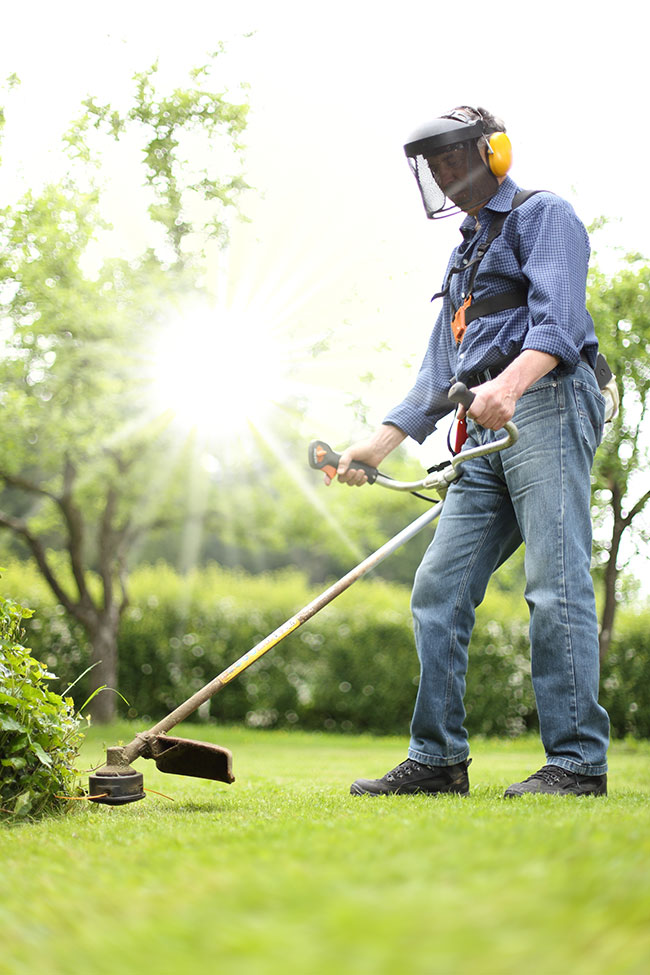
Features
Health & Safety
Health & Safety: Keeping vibrations in check at work sites
Extreme vibrations pose health risk
June 17, 2022 By CCOHS
 Workers can start to experience symptoms as exposure increases Photo credit: RioPatuce Images/Adobe Stock
Workers can start to experience symptoms as exposure increases Photo credit: RioPatuce Images/Adobe Stock The human body was built to be mobile. It was not, however, meant to vibrate. In small doses, vibration is harmless, even useful – think of the massage chair at the mall or your electric toothbrush. However, vibration can also be a significant hazard when it comes to outdoor recreation workers and the tools and machinery, they regularly use to do their jobs.
The effects of ongoing and frequent exposure to this vibration can be disabling and permanent.
But injuries and illnesses from vibration are preventable. If the exposure level is low, so is the health risk. Workers can start to experience symptoms as exposure increases.
Whole-body vibration
Workers who operate mobile machines, such as lawnmowers, rototillers, skid steers or loaders, are at risk of exposure to whole-body vibration. Operators of off-road vehicles may experience considerable vibration, depending on the condition of the vehicle’s suspension system, shock absorbers, seats, and tires.
Workers exposed to whole-body vibration may experience fatigue, loss of balance, stomach problems, headaches, and shakiness. The effect has been described as motion sickness, or the general malaise some people feel after a long car or boat trip. Long-term effects from daily exposure over several years may cause several health effects, such as back disorders and gastrointestinal issues.
To help reduce the risk of injury, ensure a smoother ride. When possible, use machines that generate low vibration. Vehicles and mobile equipment should be well maintained, so suspension systems in the cab, tires and seats can help absorb vibration. On vehicles and mobile equipment, replace solid tires before they reach their wear limits. Having the proper seats also reduces vibration.
On off-road vehicles and mobile landscaping equipment, certain built-in features can help. Seats with armrests and lumbar support or air-ride suspension, suspended cabs and properly inflated tires help control whole-body vibration in vehicles.
Employers should train vehicle operators on how to:
- adjust the seat position and controls (where adjustable) and, on suspension seats, the driver weight setting
- smoothly steer, brake, accelerate, shift gears and operate attached equipment
- match vehicle speed to ground conditions
Workers should be trained to use vehicles and machines that have the right power, size, and capacity to suit the work.
Hand-arm vibration
Certain power tools cause excessive vibration exposure to the hands and arms. This vibration can cause a range of conditions such as carpal tunnel syndrome, vibration-induced white finger, and Raynaud’s Syndrome or dead finger.
Numerous hand-held power tools and equipment can cause illness from hand-arm vibration. Some common sources of vibration are grinders, sanders, mowers, hedge trimmers, needle guns, jackhammers, riveting and chipping hammers, and chainsaws.
Hand-arm vibration damages blood vessels in the hands and fingers. It reduces blood flow and can harm the skin, nerves, and muscles. The worker may experience a tingling sensation or numbness in the fingers, a weakened grip, hand and arm pain, and general clumsiness with the hands. When the fingers are cold and wet, the tips might turn white or blue, then red and sore. With continued use of high-vibration tools, these symptoms will likely progress to permanent numbness in the hands, inability to pick up small objects, and more frequent white finger episodes. Smoking and exposure to the cold reduce blood flow to the hands.
Workers exposed to vibration should wear sufficient clothing to keep them warm and dry, which will encourage good blood circulation and help protect them from developing vibration white finger.
How to prevent injury
The best way to avoid injury and lasting damage from vibration is to minimize workers’ exposure to it.
Provide non-vibrating tools for workers whenever possible, or those that have built-in features to reduce vibration.
Workplaces should maintain exposures as low as possible. In many work applications, manual tasks can be mechanized, removing workers from harmful exposures to vibration.
Design work in such a way that those exposed to vibration have long rest breaks or shake-free tasks between exposures. Older employees, those with back problems or workers who are pregnant, should certainly avoid long periods of exposure.
Limit the use of vibrating hand tools to only a few hours per day and days per week, with a 10-minute break each hour.
The Canadian Centre for Occupational Health and Safety (CCOHS) promotes the total well being of workers in Canada by providing information, training, education, systems and solutions that support health and safety programs and injury and illness prevention.
www.ccohs.ca
Print this page